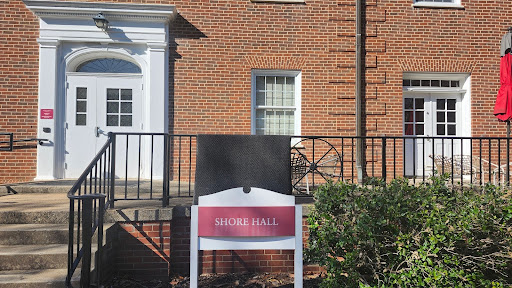Horrors of death row in the United States
Ruben Cantu. Troy Davis. Leo Jones. These are the names of just a few of the innocent people that have been wrongly murdered through the death sentence.
Their societal classifications, such as race and socioeconomic status, made them easy targets for corrupt police forces to unfairly convict and execute them. They are not alone. According to “The Innocence Project,” through conservative estimates, 4.1% of people on death row in the United States are innocent. This means that approximately 109 people who are currently on death row are blameless.
These people, despite their innocence, are facing cruel and inhumane murder through arduous and unnecessarily torturous execution methods. The Death Penalty Information Center found that the most commonly used execution method, lethal injection, is botched 7.1% of the time, leaving victims to die slowly and painfully.
In Clayton Lockett’s case, it took him two hours to pass. As recorded by the American Bar Association, he gasped for air more than 600 times in the process, and ultimately died of a heart attack due to the extreme traumatic stress his body experienced.
This clearly violates the Constitution’s Eighth Amendment rights against “cruel and unusual punishment.”
Even in cases where those executed are guilty, they are human beings who are equally entitled to humane practices. All people should be afforded the basic dignity of the right against “cruel and unusual punishment,” the right to due process under the law and the right to life.
Those who are killed through effective lethal injections still die in pain, but even in a completely hypothetical scenario where those put to death die painlessly, they go through excessive pain on death row before their execution. People on death row are psychologically tortured and extensively traumatized because of the inhumane living conditions they are forced into.
Typically those on death row are put in solitary confinement, where they can remain for decades before their execution. Solitary confinement can create and exacerbate mental illnesses, increasing the risk of severe depression, panic attacks, hallucinations and complete psychological breakdown as found by the American Psychological Association.
For those exonerated after being found innocent, their immense psychological damage is irreversible. Societal stigma, neglect and lack of resources to address trauma lead those exonerated to have to endure further cruelty even in their freedom. They can never be truly free from the immense trauma that they were forced to live with.
Those never exonerated are forced to live in these traumatizing conditions until their death. Conditions are often so egregious that people on death row “volunteer” to die, leading to an earlier execution date. Others commit suicide; the suicide rate on death row is five times higher than that of the general male population in the United States, as found by the Journal of Forensic Sciences.
This truly demonstrates how horrific and inhumane life on death row can be if people would rather die than endure it any longer.
Those who are on death row are also disproportionately affected by a lack of “due process” as racism, ableism and classism influence the police and the judicial system at large to unequally place people of color, poor people and mentally ill people on death row. As reported by the Equal Justice Initiative, over half of the people on death row are people of color, as 42% are black and 13% are Hispanic.
This racism is exacerbated when the alleged victim is white.
For example, less than 5% of Alabama’s murder cases have a black defendant and a white victim, but these cases account for over half of the black people on death row. If their alleged victims were people of color, or if they were white, they would likely not be facing execution.
Even in the convictions and cases before people are placed on death row, racial bias clearly affects the sentencing decisions. The manufacturing of an all-white jury, the racist rhetoric used to dehumanize defendants and the failure to provide adequate counsel all lead to unfair sentences, especially when the sentence means death.
Clear bias against the mentally ill also exists within this corrupt system. Although the Supreme Court decision in Atkins v. Virginia decided that execution of the mentally ill violated the Eighth Amendment rights, mentally ill people continue to be put to death because of immeasurable flaws within the system.
According to the EJI, more than 75% of those who “volunteer” to die on death row have a documented case of mental illness. However, courts fail to conduct competency evaluations before decisions become finalized, leading the mentally ill to die earlier and at faster rates than others on death row.
Many say that the state should mandate mental health evaluations to be performed before people with a history of suicidal ideations can waive their appeals. Their mental health should also be a larger consideration in their initial cases, as harsh prosecution and under-performing defense fail to recognize the mental illnesses of individual defendants, leaving a crucial part of their story out of the trial.
On that note, the lack of qualified defense directly links to socioeconomic status as those of a lower class are less likely to have access to an adequate defense. Overworked and unpaid public defenders are given an excessive amount of cases, forced to take two to five times the caseload that full-time lawyers are typically permitted according to the New York Times. This leaves lawyers without proper knowledge of their client’s history and leaves defendants without adequate counsel.
While defendants are hypothetically allowed to appeal if they have received inadequate defense, these appeals have been denied even in cases when the lawyers were publicly intoxicated, taking illegal drugs and falling asleep during critical testimonies of the trial.
This leaves people who have been convicted without fair representation and counsel to face death, despite critical information missing from their trial, a clear violation of the Sixth Amendment right to counsel and due process.
Above all these truths about the systemic and systematic injustices within the sentencing and confinement on death row lies the fundamental idea that all people deserve the right to life, as so eloquently stated in the Declaration of Independence. This is why Guilford College’s Amnesty International Club aims to bring attention to the importance of abolishing the death penalty within the United States.
No one deserves to be put to death, especially in the painful, dehumanizing ways executions are carried out on death row.
Editor’s note: This story originally was published in Volume 106, Issue 4 of The Guilfordian on Nov. 1 2019.











Dudley Sharp • Nov 6, 2019 at 11:31 am
To correct all the points from Emma’s article:
The exonerated, proven innocent and released from death row is 0.4%, not 4.0%.
No surprise that Emma’s three “innocents” executed lack such evidence.
White murderers are twice as likely to be executed as are black murderers and are executed at a rate 41% higher than for black death row inmates. White victims dominate death penalty eligible murder victim cases (3).
99.8% of poor murderers avoid execution.
It is, totally, dependent upon how one defines rich and poor, as to whether rich murderers are any more or less likely to be executed than 0.2%, with wealthy murderers committing a minuscule number and percentage of capital murders, with the most common death penalty eligible murder being robbery/murder, not a motive for the rich.
Lockett’s autopsy found that he died from the lethal injection drugs, not a heart attack, and the “toxicology reports said all three lethal drugs were found in Lockett’s system — the sedative in brain tissue and elsewhere and the other drugs in his blood.”
Lockett’s breathing pattern is consistent with the drugs used . . . they cause respiratory distress. Normal breathing for 2 hours is over 1900 breaths (average 16/min). Lockett’s 600 gasps in 2 hours would be expected with those drugs, with no evidence of pain.
Murderers, often, have severe antisocial personality disorder, with the more egregious, harmful, or dangerous behavior patterns being sociopathic or psychopathic, as expected.
The US Supreme Court has stated, correctly, that the US death penalty has “super due process”.
“Botched” lethal injections occur in 1% of executions, not 7.1%.
No surprises, with any of those, if one fact checks/vets . . . very important.
Not once were the innocent murder victims mentioned. Not once . . . a typical anti death penalty opinion piece, all around.
for excluded footnotes please contact sharpjfa@aol.com
Dudley Sharp • Nov 5, 2019 at 1:34 pm
Fact checking/vetting? Emma omitted all of the following.
The exonerated, truly, proven, innocent and released from death row is about 0.4%, as detailed (1) . . . not 4.0%.
The proof is, severely, lacking for those Emma claims were innocents executed (2).
White murderers are twice as likely to be executed as are black murderers and are executed at a rate 41% higher than for black death row inmates (3.) White victims dominate death penalty eligible murder victim cases (3).
99.8% of poor murderers avoid execution. It is, totally, dependent upon how one defines rich and poor, as to whether rich murderers are any more or less likely to be executed than 0.2%, understanding that wealthy murderers commit a minuscule number and percentage of death penalty eligible murders, as opposed to the poor, knowing that the most common death penalty eligible murder is robbery/murder (4).
The autopsy showed that Lockett died from the lethal injection drugs, not a heart attack. His breathing pattern is consistent with the drugs used, which is that they cause respiratory distress. Based upon all of the drugs being within Lockett’s system, it’s impossible to say he suffered (5).
Normal breathing for 2 hours is over 1900 breaths (average 16/min). You state Lockett had 600 gasps in 2 hours, which would be expected with those drugs.
What we know, additionally, from Lockett’s autopsy:
“Toxicology reports said all three lethal drugs were found in Lockett’s system — the sedative in brain tissue and elsewhere and the other drugs in his blood.” (5)
It’s very common for murderers to have severe antisocial personality disorder, with the more egregious, harmful, or dangerous behavior patterns referred to as sociopathic or psychopathic. No surprise, as expected.
The US Supreme Court has stated, correctly, that the US death penalty has “super due process”.
“Botched” lethal injections occur in 1% of executions, not 7.1% (6)
. . . and that is why fact checking/vetting is important.
1) Death Row, “Exonerations”, Media & Intentional Fraud https://prodpinnc.blogspot.com/2019/06/death-row-exonerations-intentional-fraud.html
2) For example”Troy Davis & The Innocent Frauds of the anti death penalty lobby”,http://prodpinnc.blogspot.com/2011/11/troy-davis-innocent-frauds-of-anti.html
many more:
The Innocent Frauds: Standard Anti Death Penalty Strategy
READ SECTIONS 3&4 FIRST
http://prodpinnc.blogspot.com/2013/04/the-innocent-frauds-standard-anti-death.html
3) RACE & THE DEATH PENALTY: A REBUTTAL TO THE RACISM CLAIMS
http://prodpinnc.blogspot.com/2012/07/rebuttal-death-penalty-racism-claims.html
4) Is There Class Disparity with Executions?
http://prodpinnc.blogspot.com/2013/03/is-there-class-disparity-with-executions.html
5) Clayton Lockett: The Case for Execution
https://prodpinnc.blogspot.com/2014/06/clayton-lockett-case-for-execution.html
6) Rebuttal: Botched Executions
http://prodpinnc.blogspot.com/2017/01/rebuttal-botched-executions.html